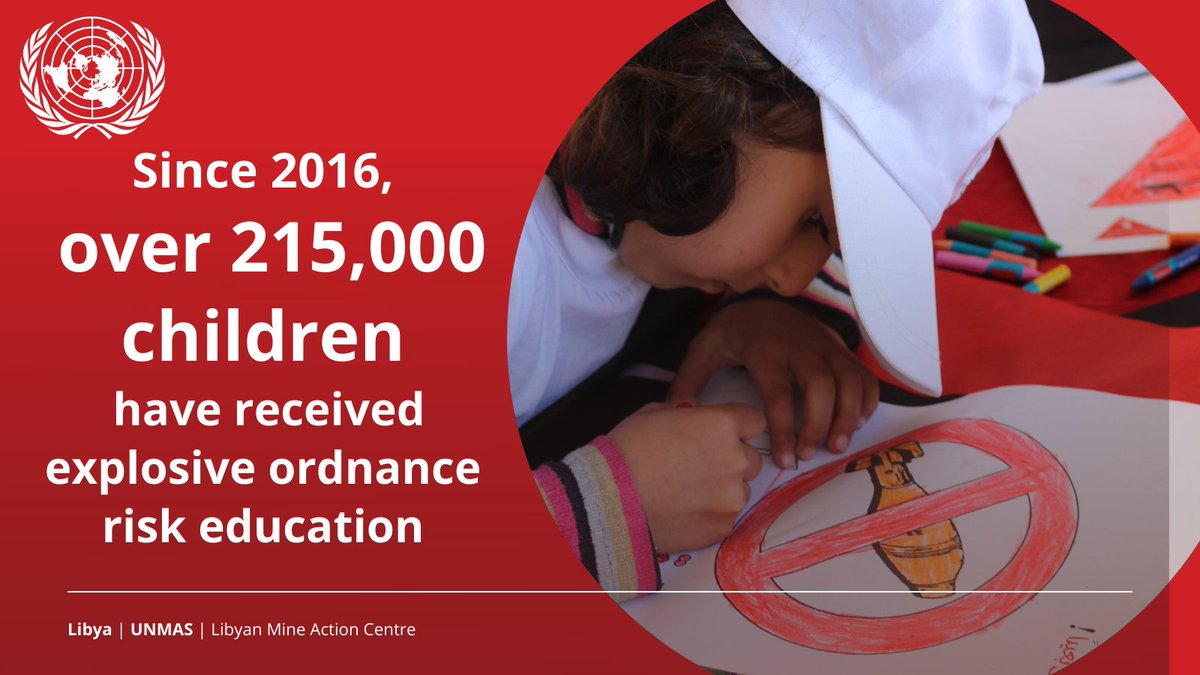06/05/2023 Libia (Libya)
“If you ever come across anything suspicious like this item, please do not pick it up, contact your local law and/or enforcement agency for assistance”.
As a young man Khaled Alwadawi picked up the remnants of a rocket that had landed near his house in Misrata and took it to the local police station. He had no idea of the risks this posed to his life and others, and was lucky. Not everyone is, which is why he finds his work to train adults and children about the risks of unexploded ordnance so important. After being trained by Handicap International to teach others about the risks, Alwadawi has spent the last seven years working with the UN Mine Action Service leading Libya Mine Action Service’s awareness work as Head of the Risk Education Section. He is focused on spreading the word to as many people as possible on the dangers of unexploded ordnance. The need for our work is greater than the resources we have available,” he says. “I also need more people to report things to us – we hear about injuries and conflicts, but a lot of the time we do not know the cause. Different devices require different education materials.” More than 1 million explosive remnants of war (ERW) which includes 82% projectiles and 4% small arms ammunition have been removed in Libya since 2011. With support from the United Nations Mine Action Service, Alwadawi and his team have facilitated training for over 300,000 children, 125,000 men and 71,000 women across Libya in risk awareness since 2011. In the first few years of his tenure at the Libya Mine Action Service Alwadawi says most accidents were caused by munition with mines being rare. But after the conflict in Sirte in 2016, there was a clear rise in the number of accidents from mines. This then dropped again, until recent conflicts in Tripoli have seen injuries from mines and wider munitions increase once again. He recounts the sleepless night he spent with colleagues following the return of civilians to southern Tripoli on 22 May 2019 after the conflict that April. The team were unable to speak to the approximately 250,000 citizens ahead of their return, and unlike their previous successful work in Sirte where they worked with officials to close the city and educate the population, people returned to Tripoli while it was still littered with munitions. Many people were injured. “We couldn’t stop the return. It was beyond us” he says, calling it the worst day of his career. “We were blamed for the accidents, when could do nothing to prevent people returning. Libya is a highly contaminated country, and we shouldn’t underestimate the danger,” he adds.
Photo d’illustration
Photo-Source: zawya.com
If you find anything that appears to be an explosive device, do not touch it, leave it where it is and call the police. We will contact the appropriate agencies to properly dispose of the item.
Biography of a Bomb
Dear editors, Biography of a bomb is aimed at highlighting the danger caused by unexploded bombs. Moreover, the most important aspect is that we work completely non profit, what drives us is raising awerness about this topic. We make use of your pictures and articles, but we need them to put a context in how findings are done. We trust in your understanding. We will (and we always do) cite the source and the author. We thank you for your comprehension.





